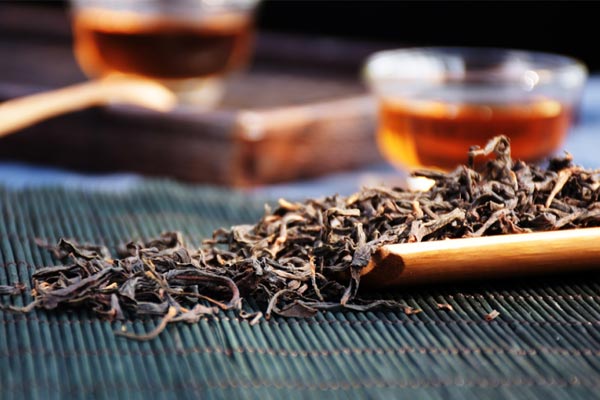As the simplest of China's six major tea types, white tea relies almost exclusively on two steps, "withering" and "drying," to preserve its true flavor.
When it comes to withering white tea, many people think of sunlight shaping the tea's aroma. But what happens if the tea is withered in a completely dark environment?
Recently, a research team from Zhejiang University in China published a research paper in the journal Food Frontiers titled "Unveiling the impact of withering methods on the aroma profile of white peony tea through integrating metabonomics and sensoryomics." The paper specifically compared withering in the dark with withering in the daylight, revealing the secrets of white tea withering in the absence of light.
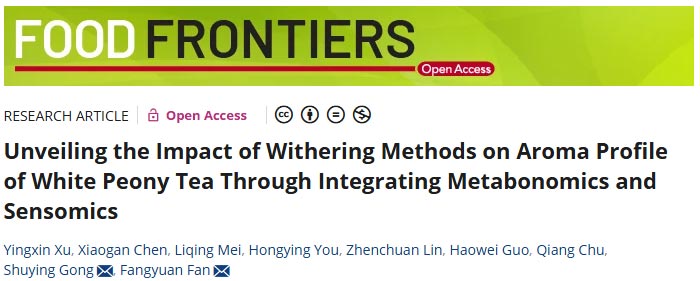
◆ Research Results
01. Dark withering, a pale green
What is withering?
Simply put, it's the process of allowing fresh tea leaves to slowly lose water and soften under suitable environmental conditions such as temperature, humidity, and ventilation.
White tea is often withered in sunlight or indoors. During this stage, the tea leaves undergo a series of chemical reactions, and these changes are the foundation for the development of the tea's aroma.
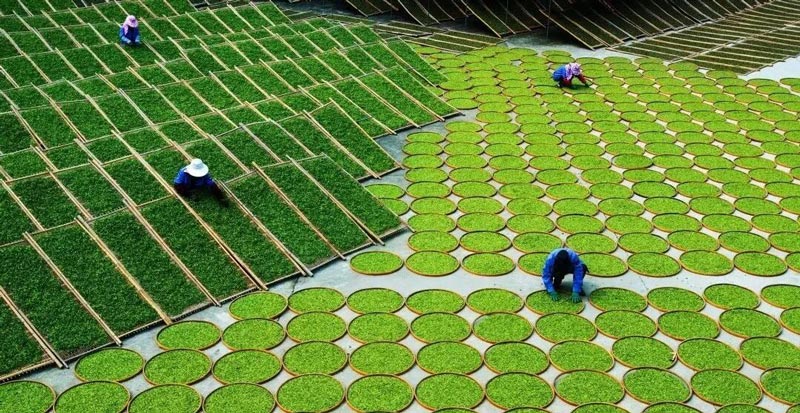
To eliminate light as a factor and focus solely on the effects of dehydration on white tea quality, the research team designed a "small dark room" experiment.
They placed fresh leaves in an artificial climate chamber, maintained at 25°C and 60% relative humidity, and withered them for 30 hours. They then dried them at 60°C for two hours to create dark withered white tea.
At the same time, a control sample of white tea withered in sunlight at the same temperature and humidity was used. To ensure the generalizability of their results, they also conducted experiments on fresh leaves from three tea varieties: Fuding Dabai, Fuding Dahao, and Baiye No. 1.

A comparison of the aromas of Fuding Dabai, Fuding Dahao, and Baiye No. 1, grown dark withering (green) and sun withering (red).
The researchers found that the "grassy aroma" was the most distinctive characteristic of dark withering white tea. Without the control of light, white tea fully retained the "greenness" of fresh tea leaves.
At the same time, dark withering also reduced the "sweetness" of white tea. The sweet, fatty, and milky aromas were all significantly lower than those of sun withering white tea.
However, there was one aroma attribute that was unaffected by light exposure: the fresh, refreshing aroma. This suggests that the freshness of white tea comes more from the tea leaves themselves than from light exposure.
02. Core Components Affected by Light
The root of the differences in tea aroma lies in the invisible, volatile components within the tea leaves. Using gas chromatography-mass spectrometry (GC-MS), the research team detected 46 volatile components from dark-withered white peony tea, encompassing nine major categories, including alcohols, aldehydes, and ketones.
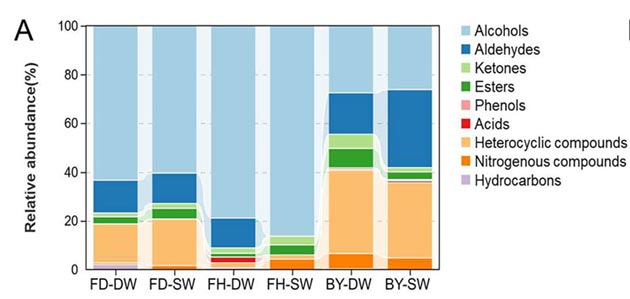
Comparison of Aroma Components in White Teas with Different Withering Times
Alcohols and heterocyclic compounds generally possess sweet and fatty aromas, while aldehydes are a key contributor to grassy notes. Dark environments alter the accumulation patterns of these components.
More crucially, the changes in five core aroma components are observed:
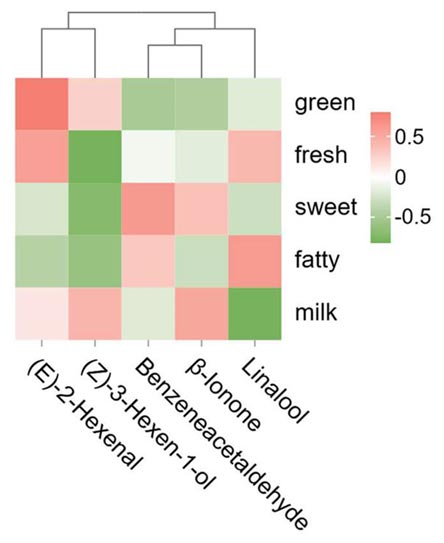
Aromatic Characteristics of the Five Core Components
For example, linalool, which contributes to a floral aroma, and (Z)-3-hexen-1-ol and (E)-2-hexanal, which contribute to a grassy aroma, maintain high levels in dark-withered white tea.
Phenylacetaldehyde and β-ionone, which contribute to a sweet aroma, are found at lower levels in dark-withering white tea.
The resulting increase and decrease of these components ultimately give dark-withered white tea its characteristic "strong grassy notes and a light sweet aroma."
◆ Conclusion
This research not only deepens our understanding of white tea but also provides a more precise scientific basis for the traditional art of "relying on the weather to adjust the aroma."
Of course, if the weather is bad during withering, artificial light can be used instead of sunlight. This is the convenience brought to us by technology.

%20--%3e%3c!DOCTYPE%20svg%20PUBLIC%20'-//W3C//DTD%20SVG%201.1//EN'%20'http://www.w3.org/Graphics/SVG/1.1/DTD/svg11.dtd'%3e%3csvg%20version='1.1'%20id='图层_1'%20xmlns='http://www.w3.org/2000/svg'%20xmlns:xlink='http://www.w3.org/1999/xlink'%20x='0px'%20y='0px'%20width='256px'%20height='256px'%20viewBox='0%200%20256%20256'%20enable-background='new%200%200%20256%20256'%20xml:space='preserve'%3e%3cpath%20fill='%23FFFFFF'%20d='M194.597,24.009h35.292l-77.094,88.082l90.697,119.881h-71.021l-55.607-72.668L53.229,232.01H17.92%20l82.469-94.227L13.349,24.009h72.813l50.286,66.45l58.148-66.469V24.009z%20M182.217,210.889h19.566L75.538,44.014H54.583%20L182.217,210.889z'/%3e%3c/svg%3e)



